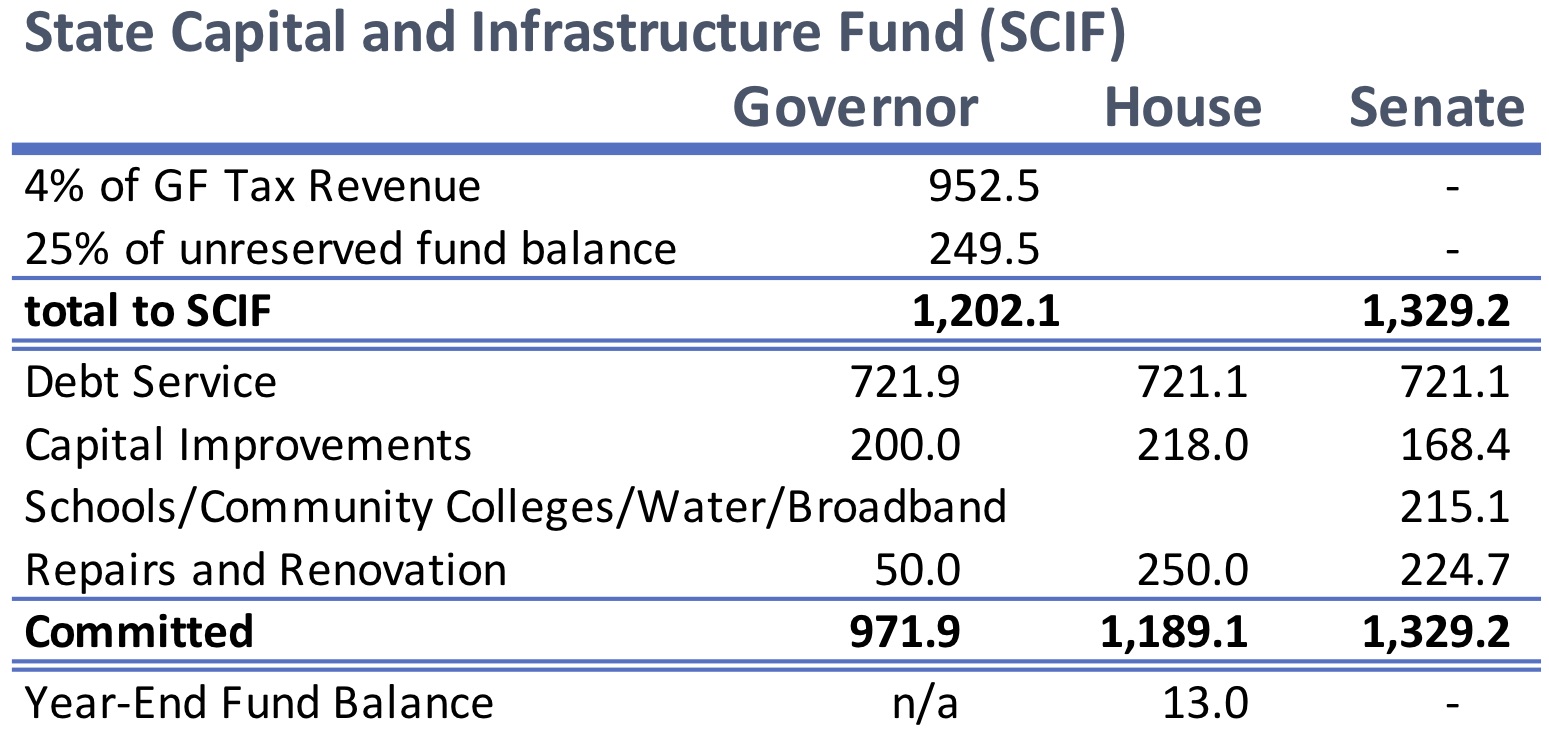The Senate budget incorporates the surprisingly large revenues from the current fiscal year that ends June 30 and higher forecast revenue for FY2019-20, but appropriates no more for operating expenses than the House did (Figure 1). Senate budget writers devote $397 million the first year and $713 million the second year to rebuild the state’s rainy day fund, the Savings Reserve, which had been drawn down by $750 million in response to Hurricane Florence. The budget adds $215 million for local schools, community colleges, and water infrastructure; $225 million for repairs and renovations; and $168 million for other construction projects (Figure 2). After taking care of other needs, the Senate leaves $743 million available in unreserved cash balance (Figure 3).
Instead of dedicating money to permanent increases in teacher salaries, the Senate provides bonuses to long-serving teachers, newly recruited teachers in small counties, and up to 40 “high-growth” principals who take on low-performing schools. The Senate budget anticipates smaller public school enrollment increases each year than either the House or the Governor.
House budget writers and Gov. Cooper set money in a reserve to improve the state’s accounting software, but the Senate appropriates it. The Senate not only converts $16 million of the $30 million in film production grants from permanent expenditures to one-time appropriations, it also transfers $15 million that was unspent from past years to other agencies.
One little-noticed change that could have big implications is a pilot program in which the Department of Environmental Quality (DEQ) would pay $1 million in rent for the space it uses and would be able to keep the difference if it uses less space. For example, if DEQ occupies 100,000 square feet in state facilities, it would pay the Department of Administration $10 per square foot per year, or $2.50 per quarter. If DEQ could scale back to 90,000 square feet, it would be able to use $100,000 in savings over the year to meet other needs.
Figure 2
Figure 3





